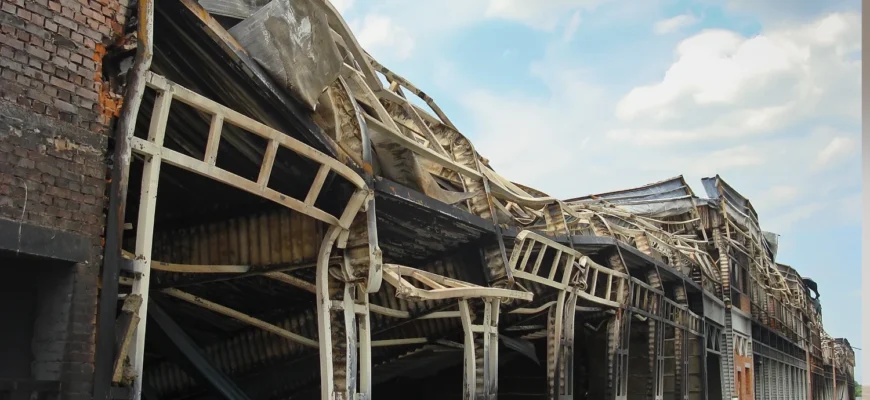- October 11, 2023
- in news
- by cleanadmin
- 286
- 0

In the wake of fire, smoke, water, or ice incidents, building owners are often confronted with extensive damage. The immediate period following such disasters is crucial for mitigating further loss. This article highlights the importance of prompt and effective mitigation measures in these scenarios, emphasizing their role in halting further damage, reducing restoration costs, and aiding in quicker recovery.
Fire compromises structural integrity and is accompanied by damaging soot and smoke, which can corrode and permanently mar various materials.
Water damage, often resulting from firefighting efforts, flooding, pipe bursts, or sump pump failures, poses risks like mold growth and structural damage. It can also disrupt electrical systems and deteriorate building materials.
Ice, particularly from ice dams or frozen pipes, can cause significant structural harm. The subsequent thawing process often leads to water damage, exacerbating the problem.
A professional assessment is vital to identify affected areas and the types of damage incurred.
This includes boarding up windows, stabilizing components, or applying tarps to prevent further elemental exposure.
Prompt water extraction and effective drying are crucial to avoid mold and further deterioration, especially in cases of pipe bursts or sump pump failures.
This requires specialized cleaning to prevent permanent damage to surfaces and materials.
Efforts should focus on cleaning, deodorizing, and restoring as many items as possible.
Quick action can avert secondary damage like mold growth or structural weakening.
Effective mitigation reduces restoration costs by preventing more extensive and costly repairs.
Prompt action minimizes health risks associated with mold, airborne contaminants, and structural hazards.
Timely mitigation is often required by insurance policies. Delays can lead to disputes or reduced claims.
Mitigating damage after fire, smoke, water, or ice incidents is a proactive step crucial for the affected property’s future. Immediate and expert attention to these measures can significantly limit damage, save costs, and ensure a quicker return to normalcy while prioritizing safety and well-being.